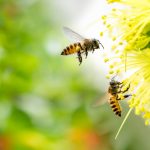10 Ways to Cut Down on Your Plastic Waste
By Alessandra Faccone, Environmental Leader
Plastic pollution is without a doubt a significant and well-known environmental problem. There are about 8.3 billion tons of plastic in the world, and about 76% of that is plastic waste (7+). Since 1950, plastic production has increased exponentially from 2.5 to 448 million tons annually, and there is no evidence that this trend will change anytime soon. The effects of this production and subsequent waste is catastrophic. It creates microplastics that are almost impossible to recover, and it inflicts an abundance of harm on wildlife. Microplastics surface everywhere, even in Antarctic ice, and there is not enough research to know how this will affect environmental systems and societies in the future. Millions of animals are killed as a result of plastic, mostly from starvation or entanglement, and nearly 700 species have already been negatively impacted by plastic. This damage will only get worse as the projected production of plastic will double by 2050 (Parker).
So what can be done? Change has to happen on all levels, local, state, and national, but this can be difficult for individuals wanting to start making a difference now. The only guaranteed control you have is over your own actions, so here is a list of actions anyone can implement into their everyday life to cut down on plastic waste.
#1. Groceries

Image Source: GoodStudio via Shutterstock
As an important part of most people’s lives, where you shop and what you buy can have a significant impact on your total plastic waste. Many of the products sold at supermarkets are packaged in plastic, which can be unavoidable for certain items. However, there are local grocery stores like Mom’s Organic Market, Balducci’s, Dawson’s Market, and Whole Foods that sell products in bulk. In those stores, you can fill up mason jars with important basics like rice, nuts, coffee beans, even laundry detergent instead of buying it already packaged in plastic. In addition, these stores generally use less plastic to package products, which already cuts down on a major contribution of plastic waste.
TLDR: Shop at stores that sell bulk items unpackaged and buy products that are not packaged in plastic.
#2. Bottles & Beverages
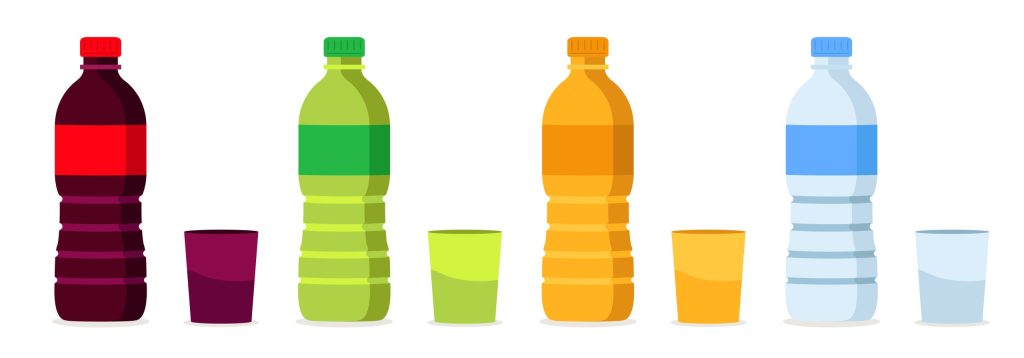
Image Source: Oculo via Shutterstock
One of the most well-known culprits of plastic waste is the plastic water bottle. Instead of buying water in this way, buy a reusable water bottle and a filter to fill with water from the tap. Another important aspect of this is buying beverages from places that do not use plastic. For example, find an alternative to Starbucks that doesn’t use plastic, or buy a reusable Starbucks bottle and ask the employees to make your drink in that instead. Lastly, instead of using plastic straws, use reusable or compostable ones like paper, bamboo, metal, glass, or silicon.
TLDR: Use reusable water bottles even when buying drinks from places like coffee shops; use reusable straws.
#3. Bags
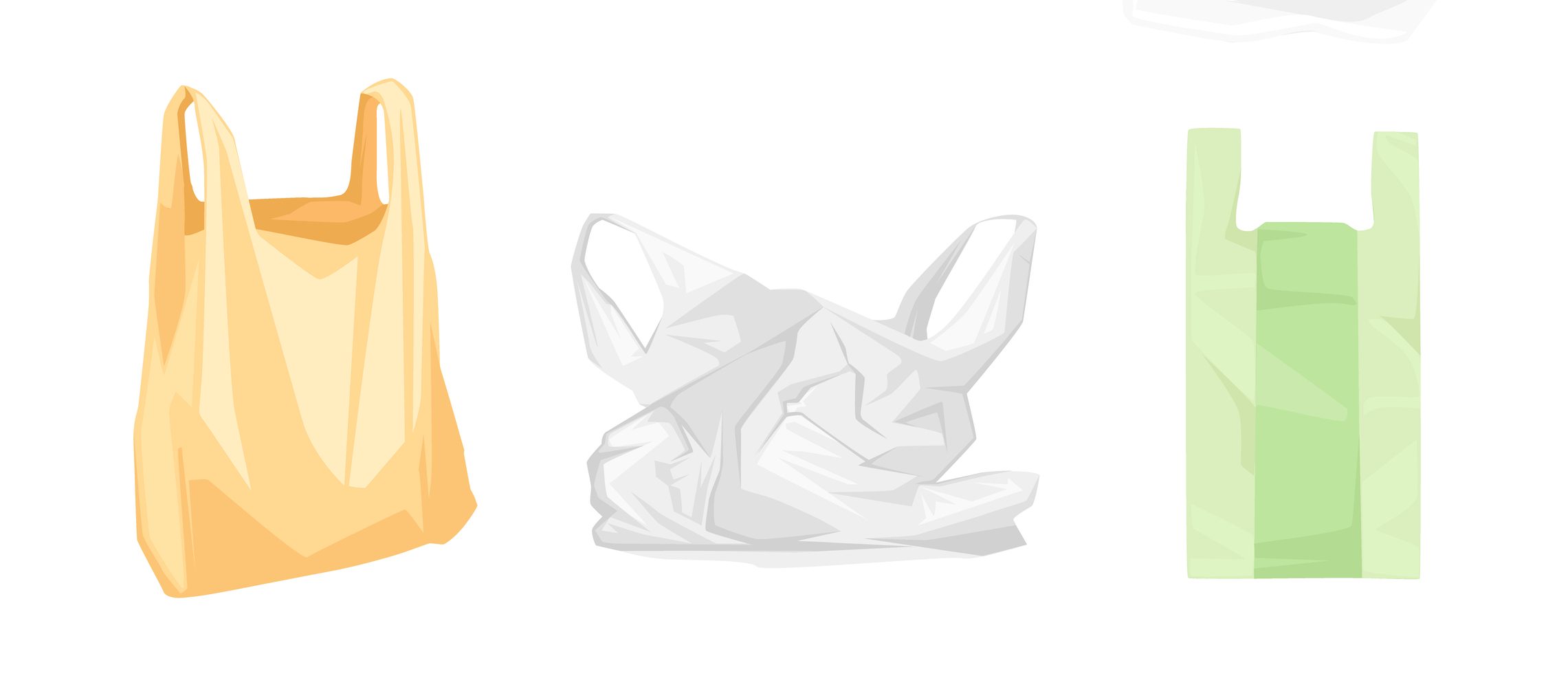
Image Source: Alfmaler via Shutterstock
Carrying things from point A to point B may seem like a task unrelated to plastic waste, but bags and packaging account for almost 40% of total plastic waste. Over 500 billion plastic bags are used annually worldwide (Plastic). Main contributors to this type of waste include shopping bags and ziplocs, which are commonly used when buying things like groceries, takeout, clothes, etc. When shopping, bring reusable bags with you, like cloth nets when buying individual fruits and vegetables at the grocery store. Buy alternatives to plastic zip locks like Stasher bags, which are reusable and produce less waste. However, because the impacts of different sustainable alternatives can vary extensively, the most sustainable overall bag option is to use the bags you already possess as many times as you can to reduce its environmental toll (National).
TLDR: Reuse the bags you currently possess and switch to sustainable alternatives of single-use bags.
#4. Hygiene and Beauty Products
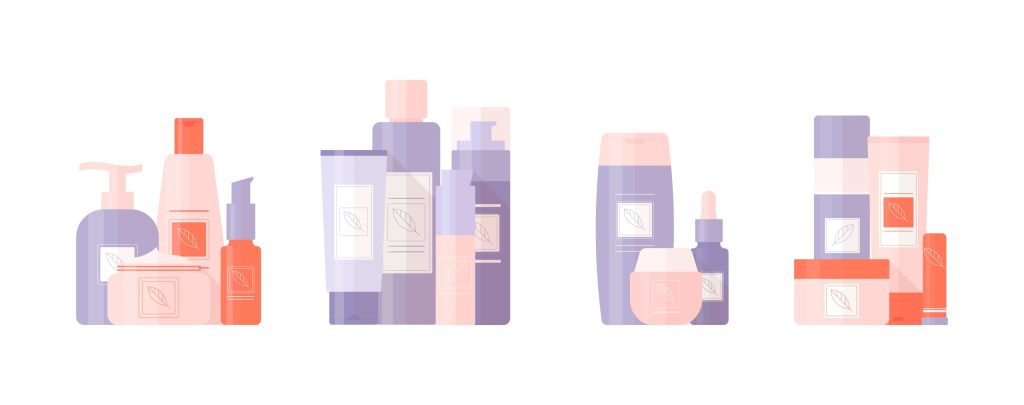
Image Source: tata_illustrator via Shutterstock
Products kept in your bathrooms use more plastic than you expect. Common culprits are toothbrushes, toothpaste tubs, soap bottles, razors, skin and hair care products, and most makeup. Alternatives to these include bamboo toothbrushes, toothpaste tablets, and bar soaps. Shampoo and conditioner can be bought in bulk in personal containers in local stores like Mom’s Organic Market. In addition, you can buy metal razors with replaceable blades. Grove.co is a great place to shop for these alternatives. Shopping for sustainable beauty products may seem daunting because a good amount of makeup products are packaged in plastic, but Follian has a variety of products that you can integrate into your collection to reduce your plastic consumption in that area.
TLDR: Shop at Grove.co and Follain to replace common plastic products in your bathroom.
#5. Cleaning Products

Image Source: NotionPic via shutterstock
While more obscure than previously mentioned actions, analyzing your plastic consumption when it comes to cleaning is just as important. Similar to hygiene products, most cleaning products like bleach and laundry detergent use plastic to package their products. A couple steps you can take to reduce plastic in this area is to fill up reusable containers with laundry detergent from stores like Mom’s Organic Market, buy wool balls instead of dryer sheets, and use refillable dish soap bottles. The latter two are available to purchase on Grove.co, along with many other sustainable alternatives of common cleaning products.
TLDR: Buy and use refillable containers for cleaning products, which can be found on Grove.co.
#6. Pet products

Image Source: AliceFoster via Shutterstock
Another unlikely culprit of plastic waste is pet related products like food bags, toys, and waste products. Pets can leave large plastic trails, too. However, there are many options available to reduce this plastic usage. Unless you already bought plastic food bowls, instead buy metal or ceramic bowls. Try to find pet foods that are packaged in compostable or paper bags, or try making your own food for your pet. Pet waste is a bit more difficult to deal with, and there are many different options available. Buying eco-friendly waste bags is a good start, but you can also create a composting pet waste toilet or use a pet waste collection service. For small animals, composting the straw or sawdust along with the waste is a great way to minimize the plastic involved in disposing it in a trash bag. In addition, buy pet toys that are made out of natural materials like organic cotton, hemp, or rope, or create your own toys using items like old t-shirts or cardboard. These simple actions can have substantial impacts on your overall plastic waste (How to).
TLDR: Figure out what plastic is involved when caring for your pet, and see alternatives listed above.
#7. Kids’ Toys
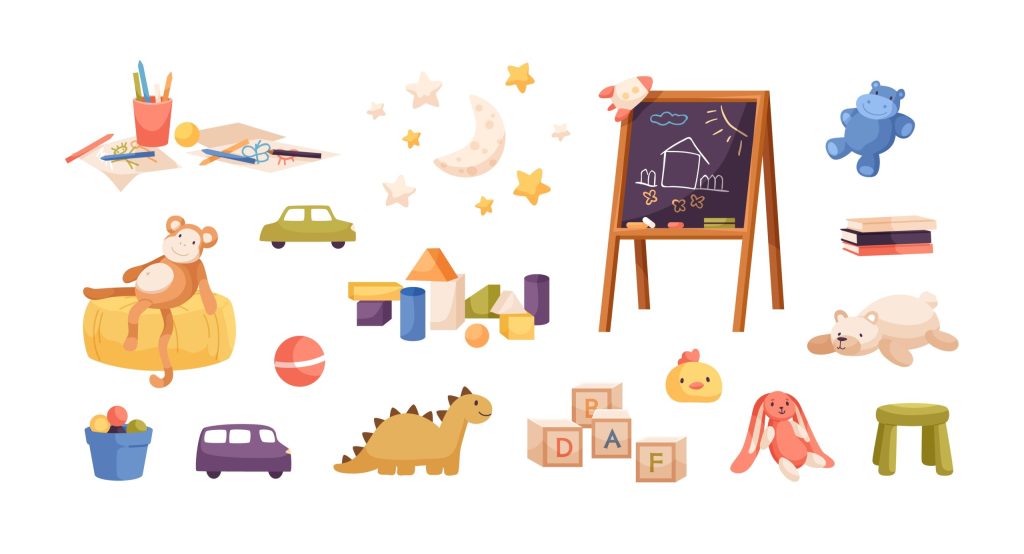
Image Source: GoodStudio via Shutterstock
Similar to pets’ toys, the toys you buy your children, nieces, nephews, grandchildren, godchildren, etc, can also increase plastic consumption and waste. Most toys are individually wrapped in plastic and are usually plastic themselves. For example, a popular toy is LEGOs, which are plastic. Others include fake food, kitchen sets, figurines, miniature cars, playmobil, and more. Instead of buying new, plastic toys for your young kids, try buying used toys, handmade toys on Etsy, or wooden toys. In addition, selling or donating your old toys instead of disposing of them is a good way to help less fortunate kids and reduce your plastic waste. Overall it is important to repurpose your or your kid’s toys or allow others to reuse toys, and it is beneficial to buy nonplastic toys.
TLDR: Sell, donate, or reuse old toys, and going forward, buy toys that are not plastic.
#8. Boxes & Bins
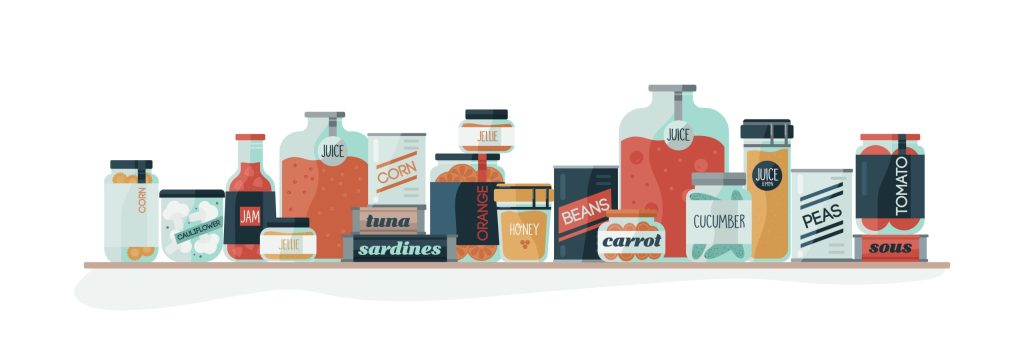
Image Source: GoodStudio via Shutterstock
Similar to bags, how you store food and other objects usually involves plastic. Plastic tupperware is very popular due to its cheap prices and durability; however, there are other similar products that may cost more, but are better for the environment in the long run. Examples include glass, ceramic, or metal tupperware. In addition, use metal utensils instead of plastic whenever you can. Bringing your own takeout containers when eating out can also help avoid packaging your leftovers in whatever containers the restaurant carries, which is usually plastic. If you do possess plastic containers, use them as much as possible before they degrade or break. Lastly, an alternative to cling wrap is foil, which can be reused a couple of times, Bee’s Wrap, or silicone lids.
TLDR: Reuse your plastic containers as much as possible before switching over to glass containers. Use alternatives to cling wrap.
#9. Gifts & Gift Wrapping
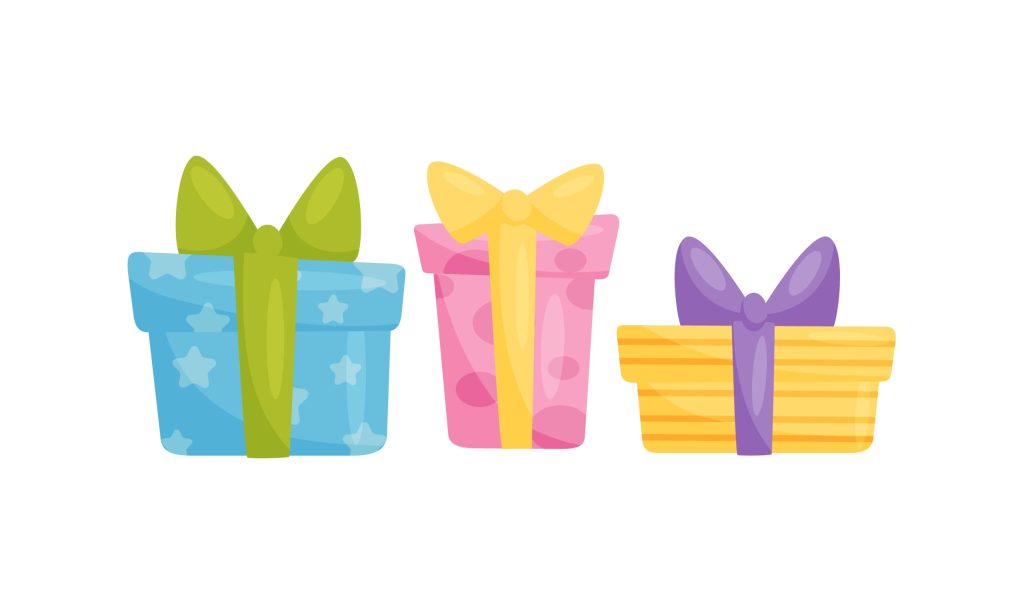
Image Source: HappyPictures via shutterstock
For this holiday season, give right by being aware of the impact your gifts can have on the environment in addition to their impact on the receiver. Try to find stores, online or in person, that both do not contain plastic in their products and do not package their products in plastic. Or, you could buy a consumable product like an interesting ingredient. Another simple step to take towards reducing your plastic waste during this popular gift-giving time is to wrap your gifts in recyclable materials. One of these popular materials is gift wrap, creating an industry that generates about 4.6 million pounds of the paper annually, with about 50% ending in landfills because gift wrap tends to be non-recyclable. Reusing old newspapers, magazines, or paper in general is a great way to combat this waste (Holiday).
TLDR: This winter, buy gifts that do not contain plastic or use plastic packaging. Use newspapers to wrap your gifts.
#10. Receipts
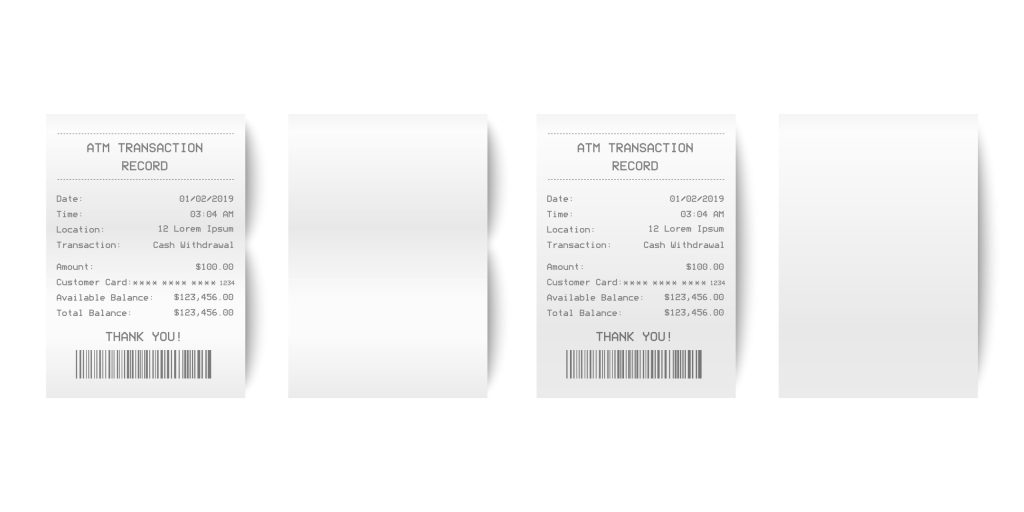
Image Source: gomalach via Shutterstock
The receipts printed every time you buy something in person are another unlikely culprit of plastic pollution because the chemicals used in producing single-use plastics are also used in making receipt paper. This is printed on shiny thermal paper, which contains Bisphenol A (BPA) or Bisphenol S (BPS). These chemicals are endocrine disruptors and have been classified by the EU as toxic to humans and to the environment (Cusden-Ross). Because of this threat, avoiding printed receipts when you can is another way to reduce your plastic footprint. The first thing you can do is have your receipts emailed to you when given the opportunity, but furthermore, switching over to paperless communication in general is a good way to prevent this plastic use.
TLDR: Have your receipts emailed to you when given the opportunity.
Plastic is used in almost everything we buy, whether through packaging or in the thing itself. Because of its all encompassing scope, it can be very difficult to find alternatives that are cost friendly. It is important to do what you can to use alternatives and stay away from plastic, but it is not fully realistic to cut out all plastic usage. Instead, all around, try to consume less, whether plastic or not, and your impact on the environment will be decreased. For more information about single-use plastics, check out this podcast on plastic from one of the previous environmental leaders.
References:
Cusden-Ross, M. (2019, March 27). We need to start thinking about paper receipts in the same way as we do plastic straws – here’s why. HuffPost UK. Retrieved December 7, 2021, from https://www.huffingtonpost.co.uk/entry/paper-receipts-plastic-straws_uk_5c9a1925e4b07435554a612.
Holiday tip: Don’t recycle gift wrap. Earth911. (2021, November 29). Retrieved December 7, 2021, from https://earth911.com/home-garden/holiday-tip-dont-recycle-gift-wrap/.
How to raise a plastic-free pet. Plaine Products. (2021, February 18). Retrieved December 7, 2021, from https://www.plaineproducts.com/how-to-raise-a-plastic-free-pet/.
National Geographic Society. (2020, June 11). Sustainable shopping-which bag is best? National Geographic Society. Retrieved December 7, 2021, from https://www.nationalgeographic.org/media/sustainable-shoppingwhich-bag-best/.
Parker, L. (2021, May 3). Plastic pollution facts and information. Environment. Retrieved December 7, 2021, from https://www.nationalgeographic.com/environment/article/plastic-pollution.
Plastic Pollution Facts. Plastic Oceans International. (2021, July 21). Retrieved December 7, 2021, from https://plasticoceans.org/the-facts/#:~:text=Plastic%20is%20a%20valuable%20resource,plastic%20bags%20are%20used%20worldwide.
7+ revealing plastic waste statistics (2021). Recycle Coach. (n.d.). Retrieved December 7, 2021, from https://recyclecoach.com/resources/7-revealing-plastic-waste-statistics-2021/.
About the Author:
 Alessandra Faccone, 2021-2022 Environmental Leader
Alessandra Faccone, 2021-2022 Environmental Leader
Alessanda is a Senior at Bethesda-Chevy Chase High School. She is excited to join the Bethesda Green community and have the opportunity to create positive changes on a broader scale and contribute to creating a sustainable future in the local community. She hopes the Environmental Leaders program will prepare her to carry out similar sustainability projects in the future.




